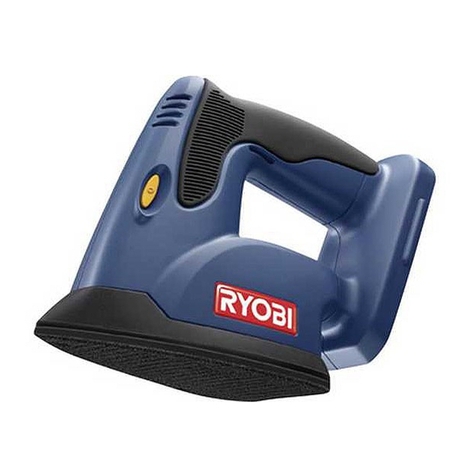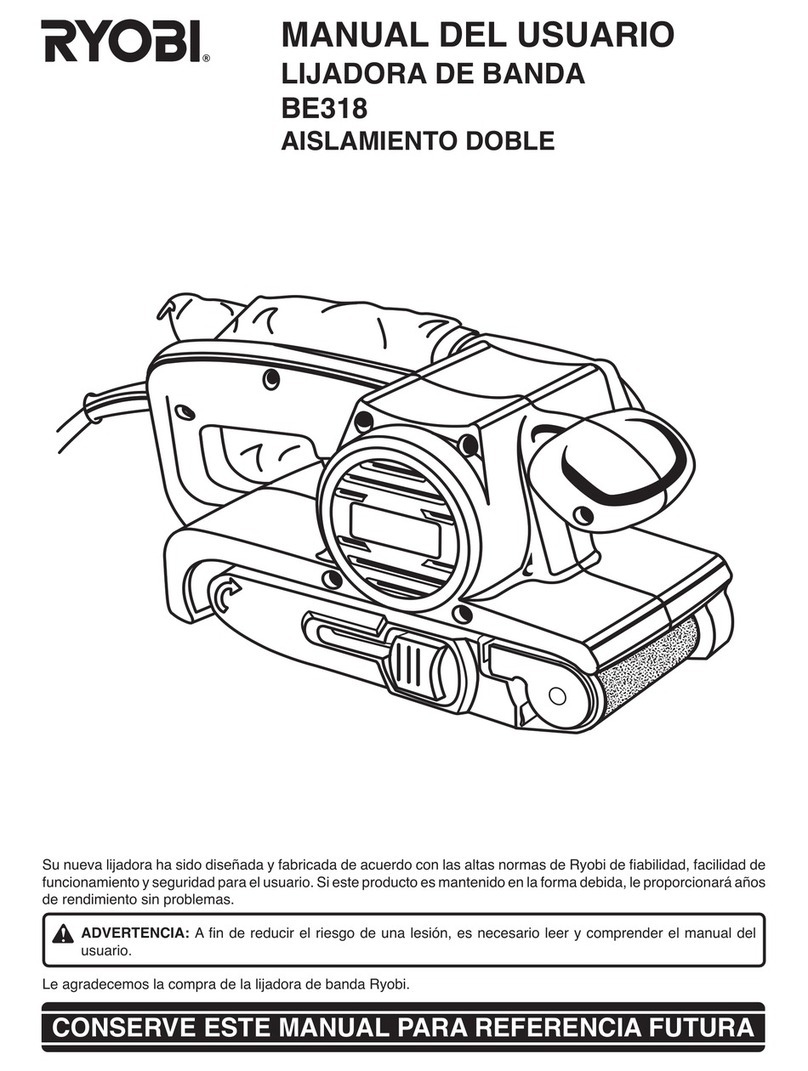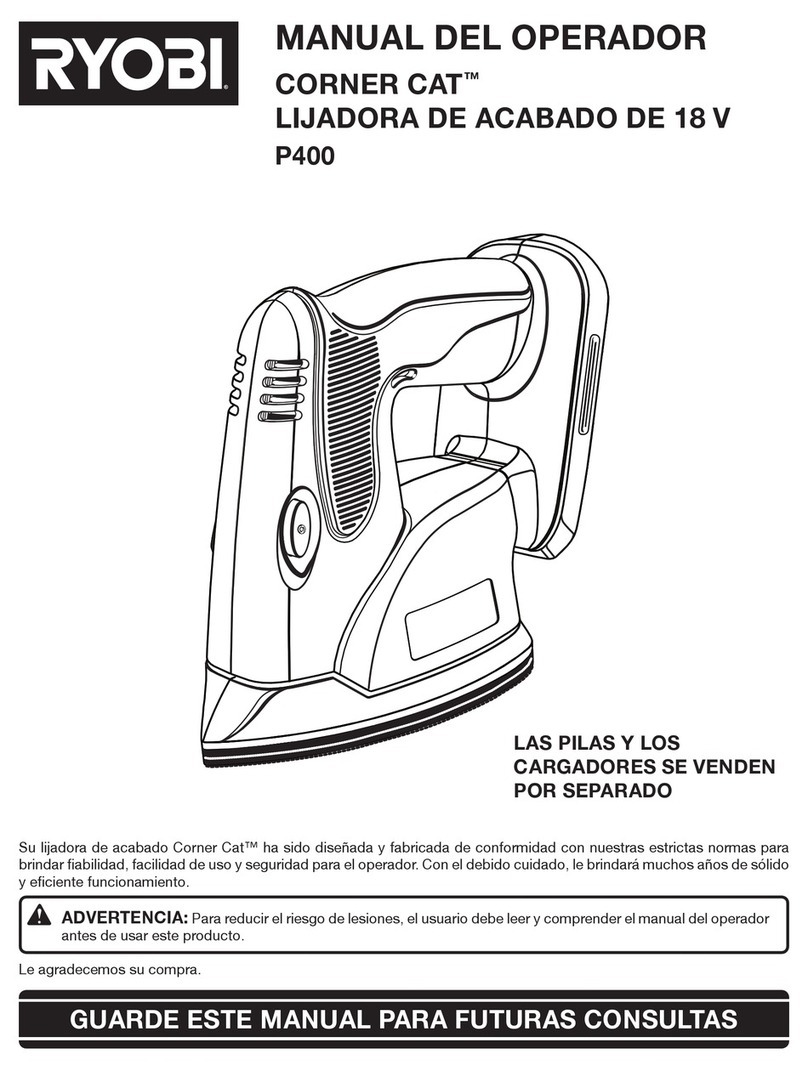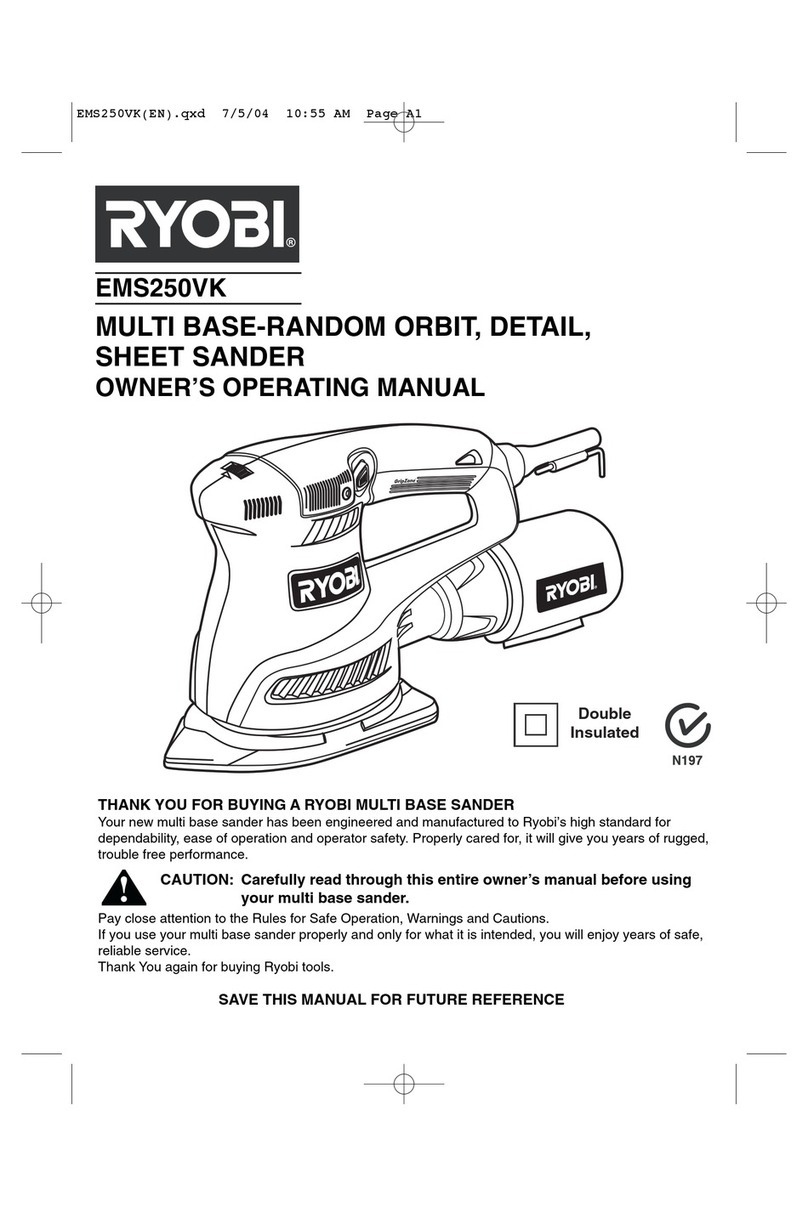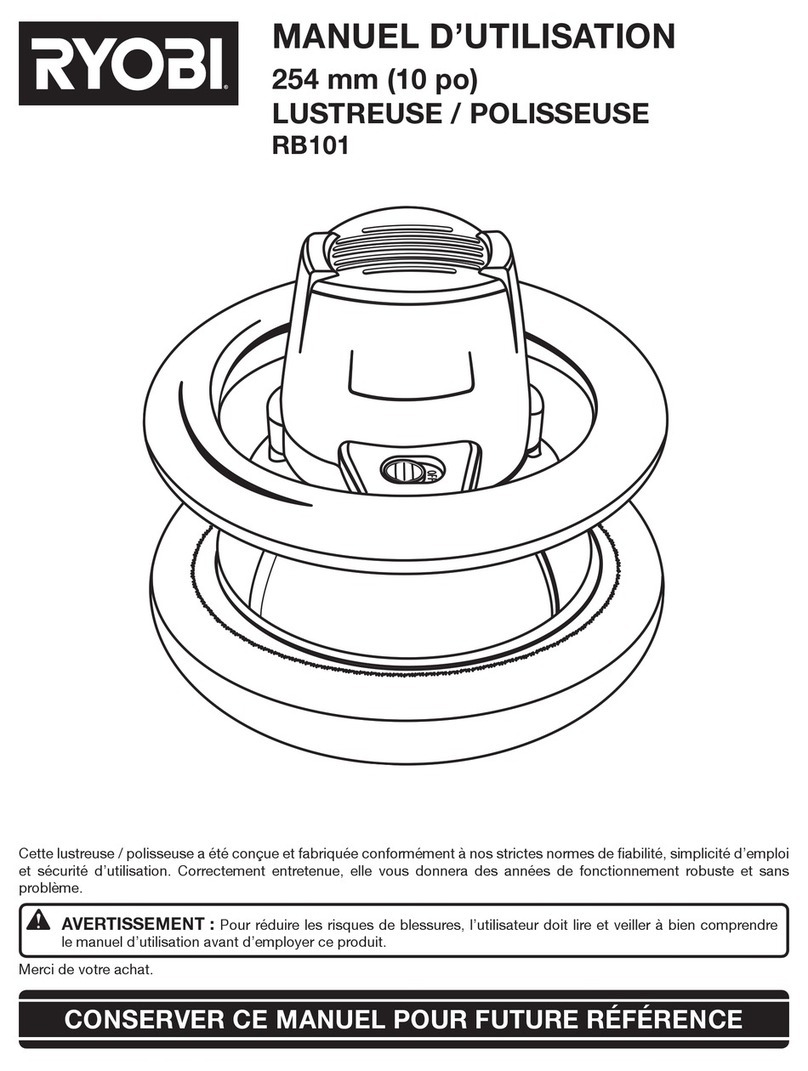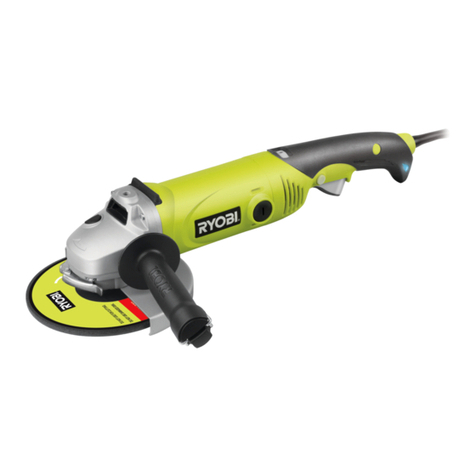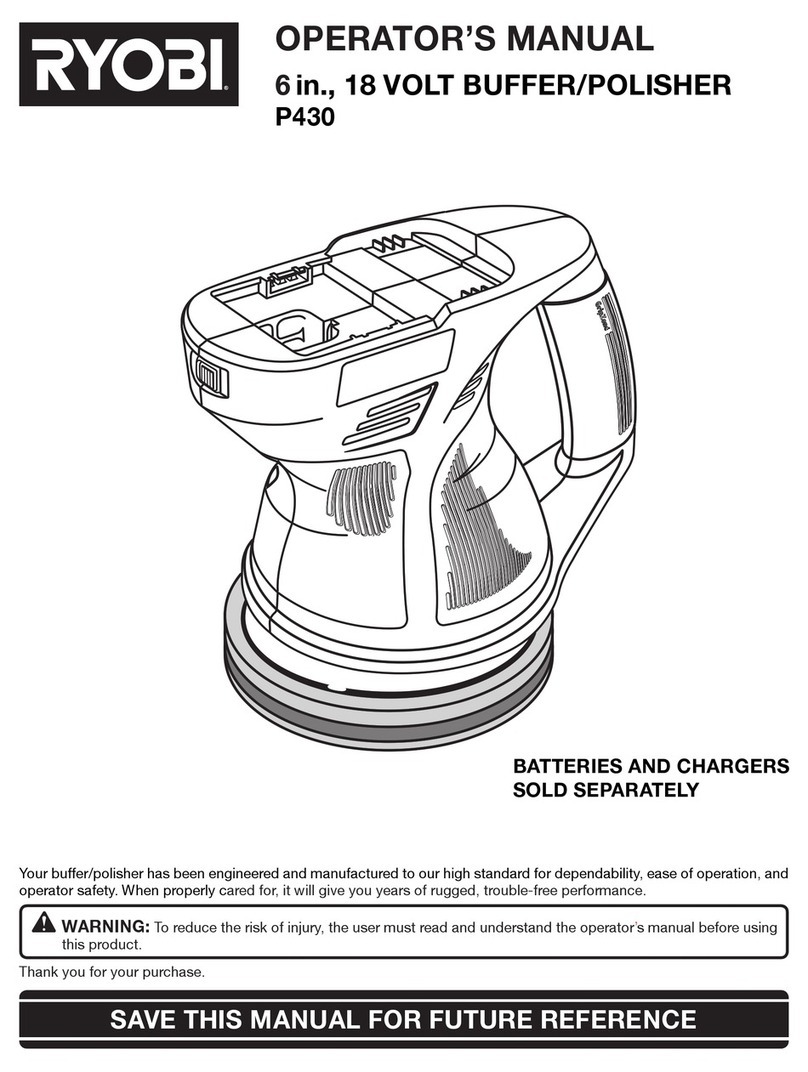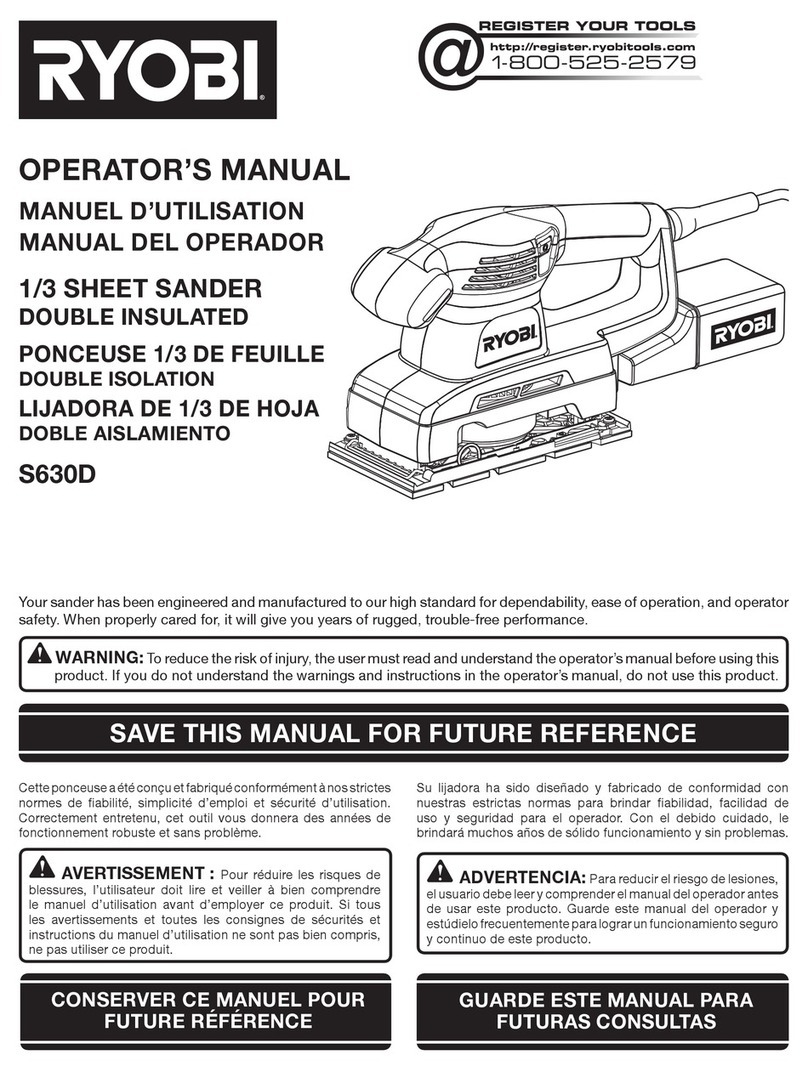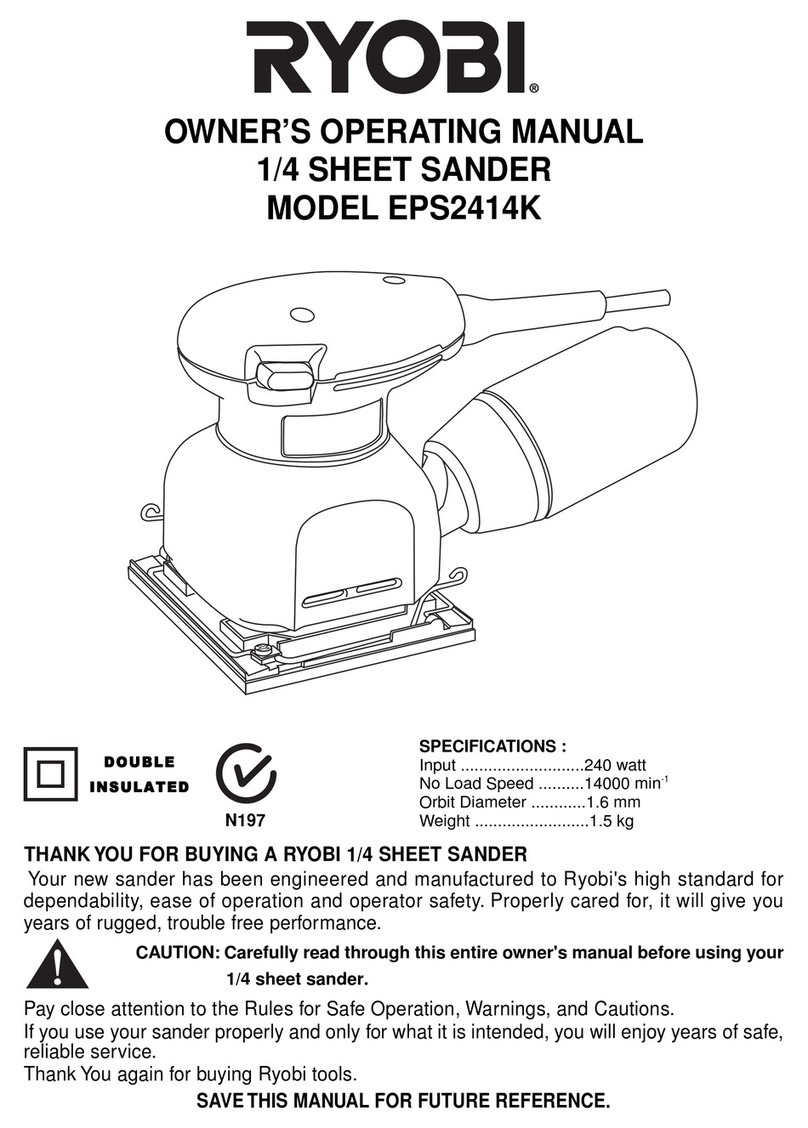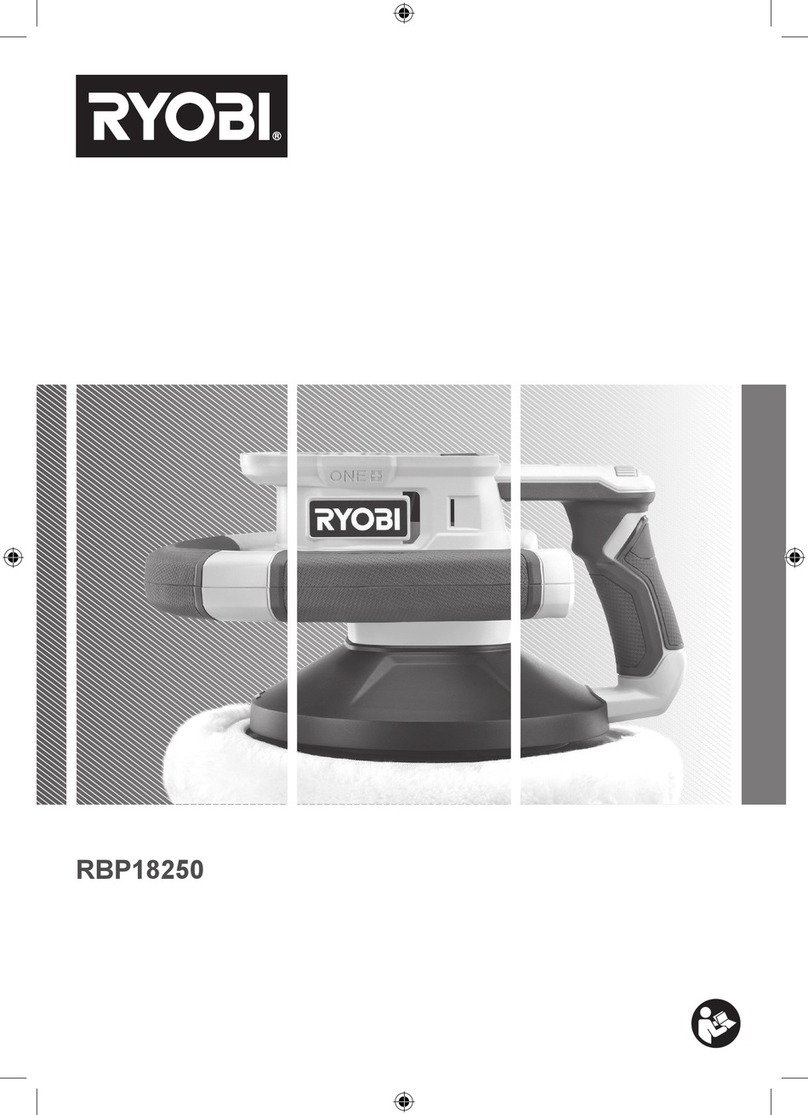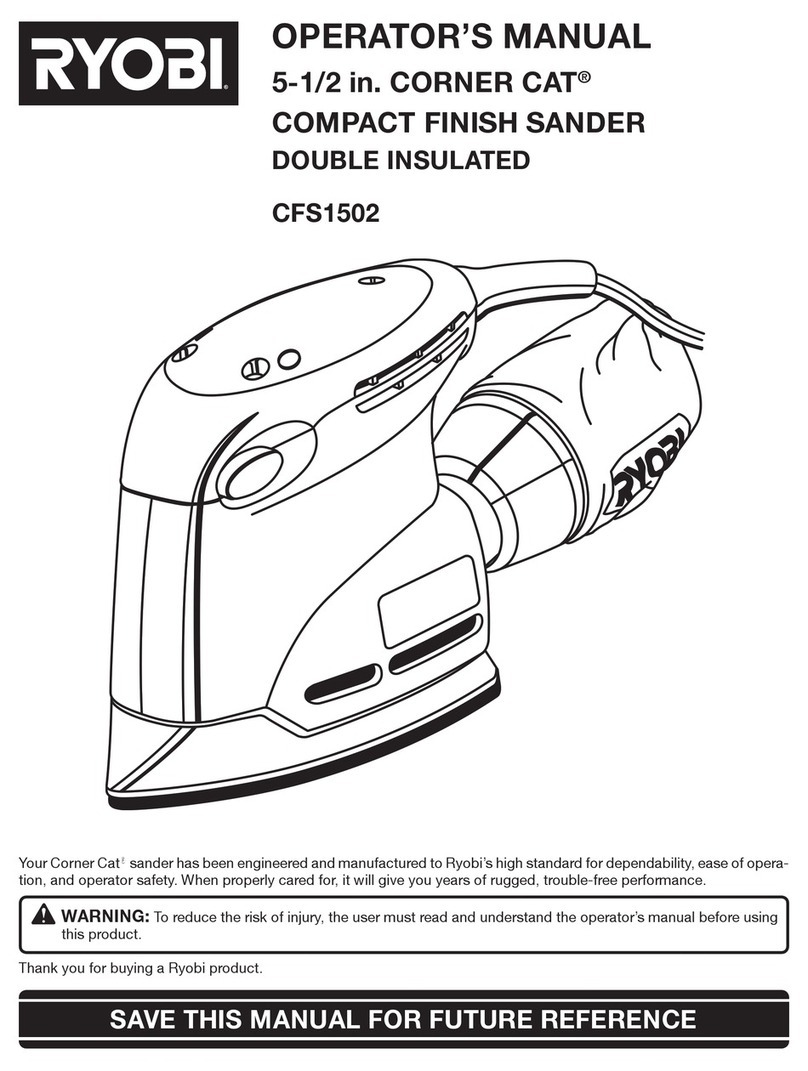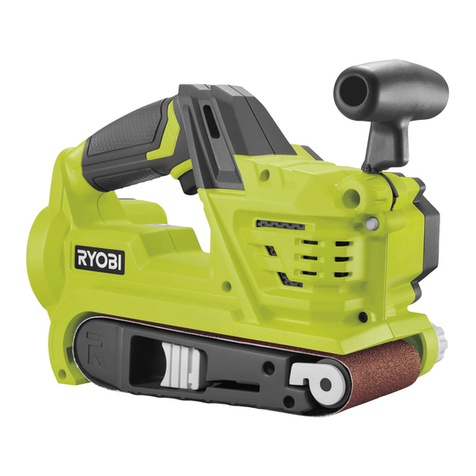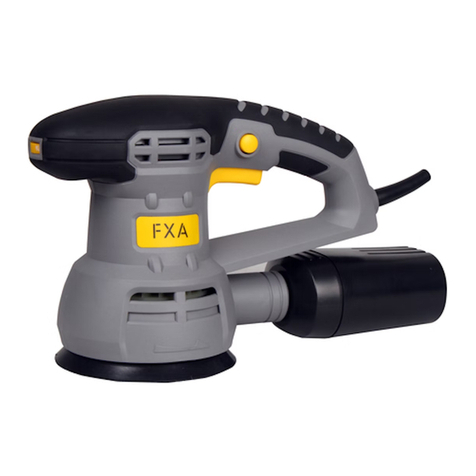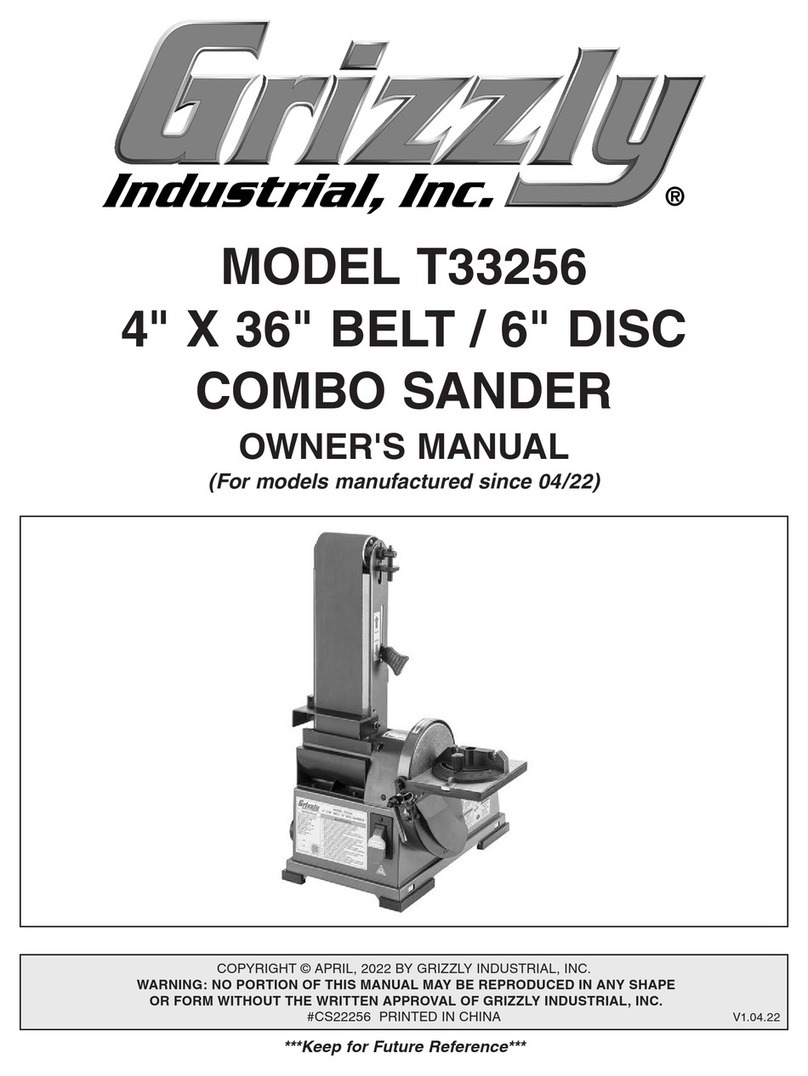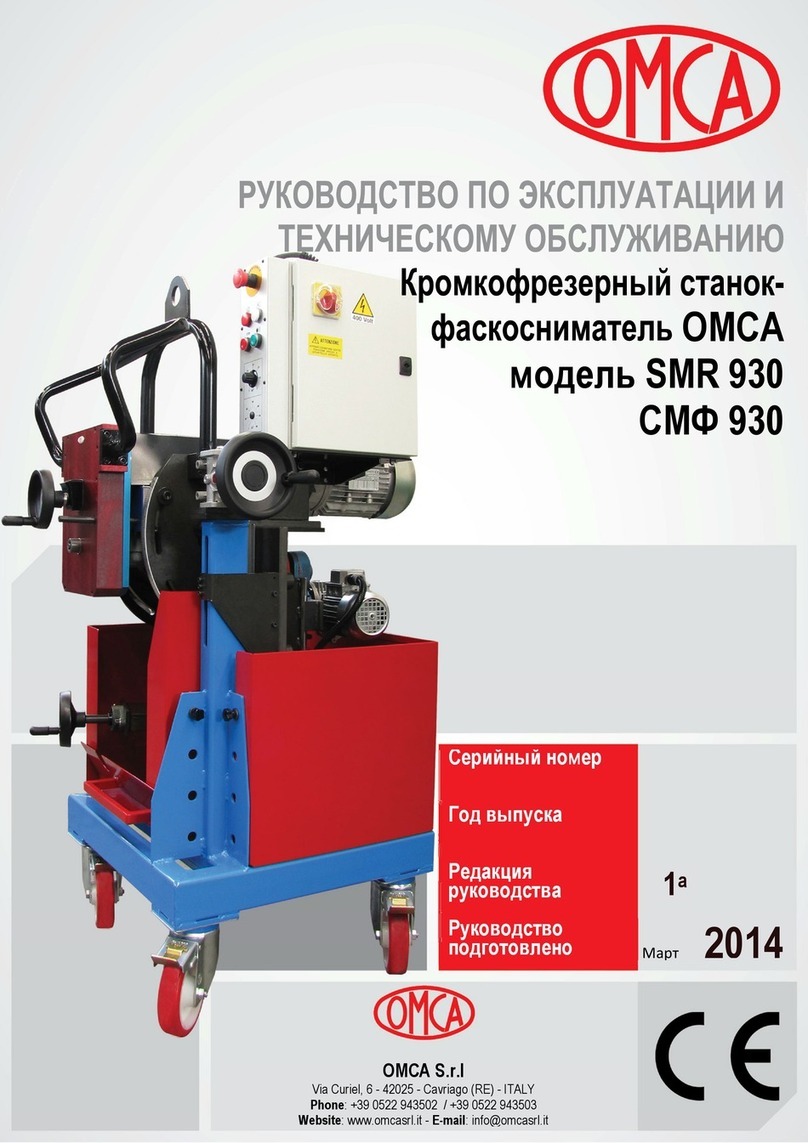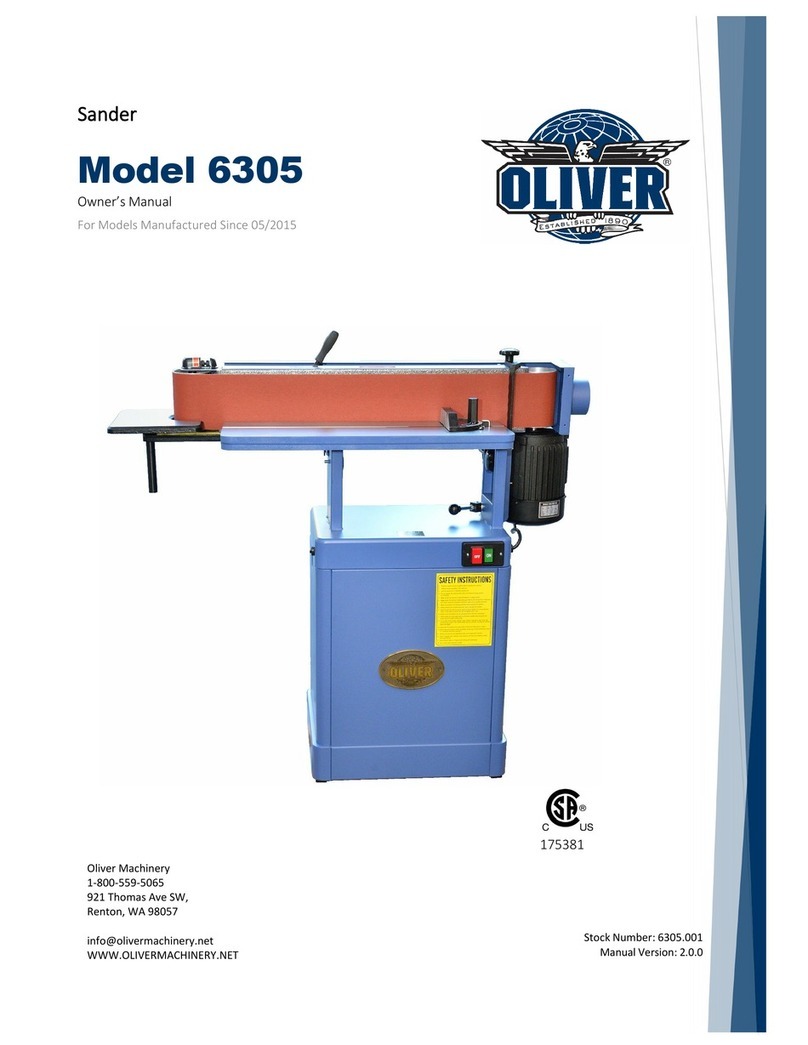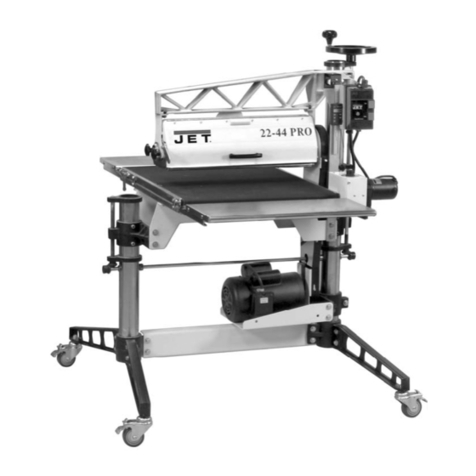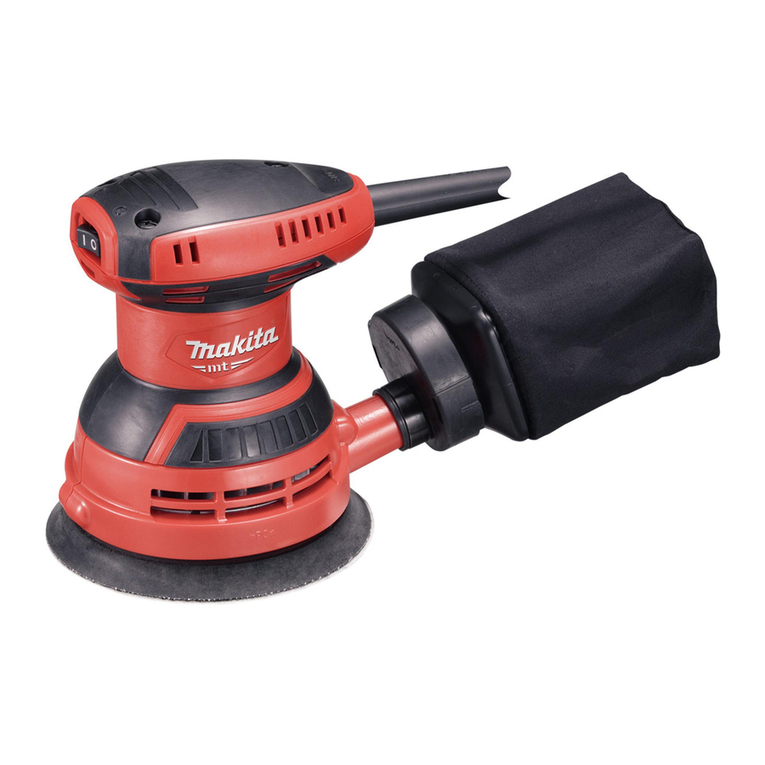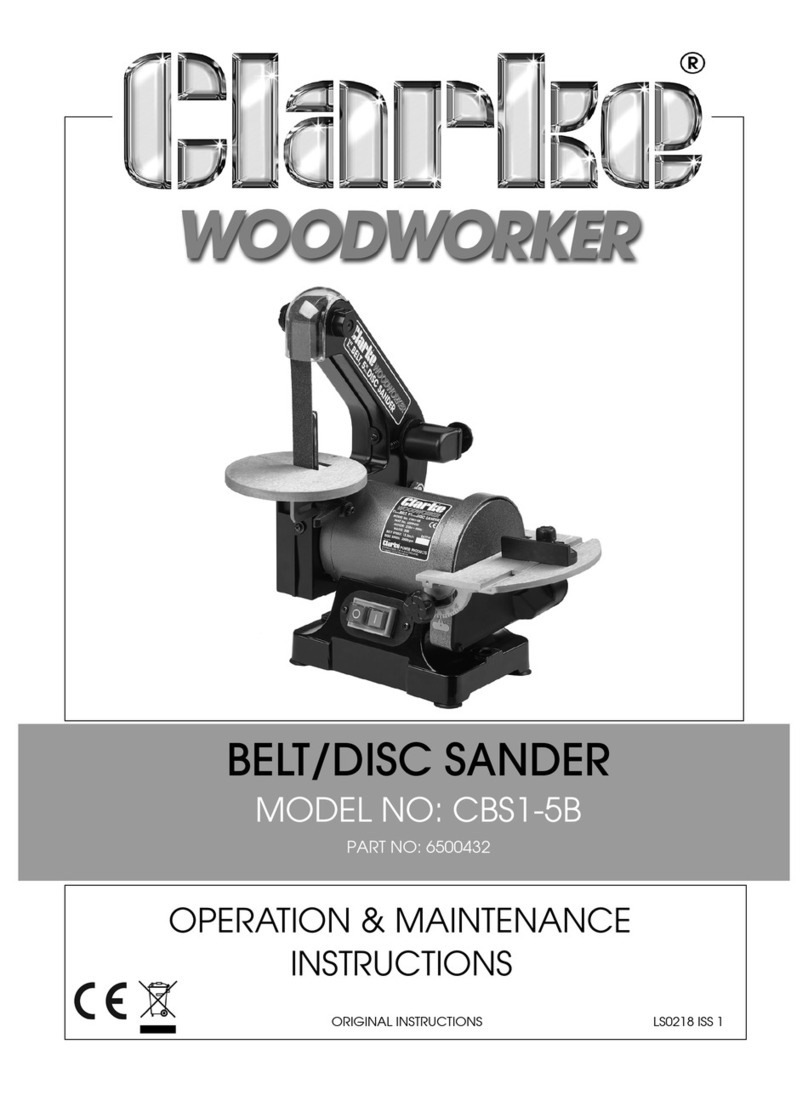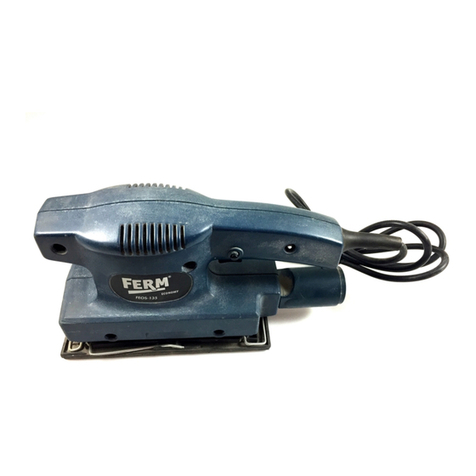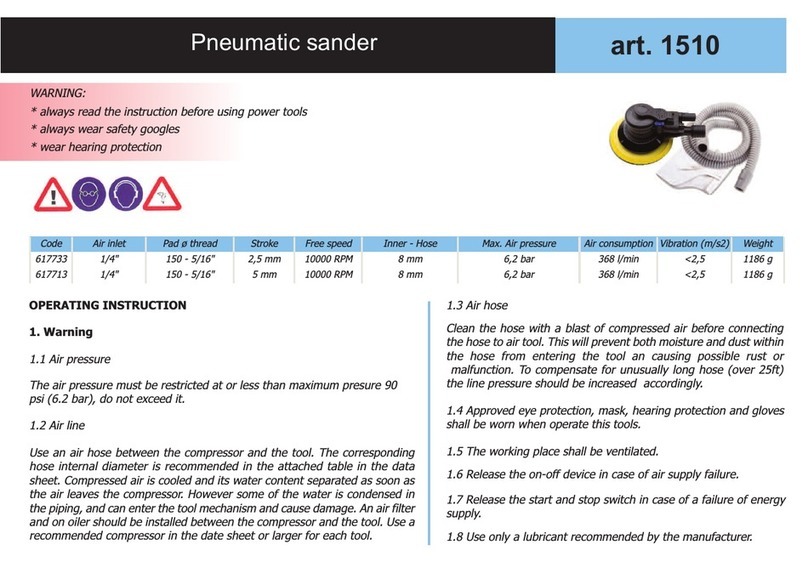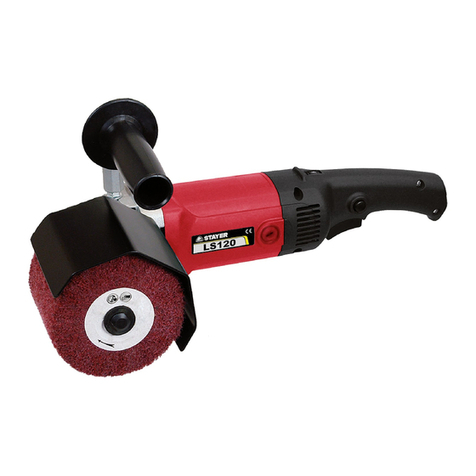
3
English
GB
FR DE ES IT NL PT DK SE FI NO RU PL CZ HU RO LV LT EE HR SI SK GR TR
WARNING
Unsecured workpieces could be thrown towards the
operator, causing injury.
WARNING
Keep your head away from the sander and the sanding
area. Your hair could be drawn into the sander causing
serious injury.
2. Place the sander on the workpiece so that all of the
sanding disc surface is in contact with the workpiece.
CAUTION
Avoid damaging the motor from overheating; be careful
not to let your hand cover the air vents.
3. Turn on the sander and move it slowly over the
workpiece.
NOTE: Hold the sander in front and away from you,
keeping it clear of the workpiece. Start sander and let the
motor build to its maximum speed, then gradually lower
the sander onto the workpiece. Move the sander slowly
across the workpiece using small circular motions.
Do not force. The weight of the unit supplies adequate
pressure, so let the sanding disc and sander do the work.
Applying additional pressure only slows the motor, rapidly
wears sanding disc and greatly reduces sander speed.
Excessive pressure will overload the motor causing
possible damage from motor overheating and can result in
inferior work. Any nish or resin on wood may soften from
the frictional heat.
Do not allow sanding on one spot too long as the sander’s
rapid action may remove too much material, making the
surface uneven.
Extended periods of sanding may tend to overheat the
motor. If this occurs, turn sander off and wait until sanding
disc comes to a complete stop, then remove it from
workpiece. Remove your hand from vent area, remove
sanding disc, then with your hand removed from vent
area, turn sander on and run it free without a load to cool
motor.
CORNERS AND CREVICES
See Figure 6.
For detail sanding such as corners and crevices, use
the tip of the sanding pad with small back and forth
motions.
EMPTYING THE DUST COLLECTION BOX
See Figure 7.
For more efcient operation, empty the dust collection
box when it is no more than half full. Always empty and
clean the dust collection box thoroughly upon completion
of a sanding operation and before placing the sander in
storage.
WARNING
Collected sanding dust from sanding surface coatings
such as polyurethanes, linseed oil, etc., can self-ignite
in your sander dust collection box or elsewhere and
cause re. To reduce the risk of re always empty your
dust collection box frequently (10-15 minutes) while
sanding and never store or leave a sander without
totally emptying its dust collection box. Also follow the
recommendations of the coatings manufacturers.
1. Unplug the sander.
WARNING
Failure to unplug the tool could result in accidental
starting causing possible serious injury.
2. Remove the dust collection box from the sander.
3. Shake out the dust.
4. Reattach the dust collection box to the sander.
NOTE: For a more thorough cleaning of the dust collection
box, remove dust collection box from frame and shake out
dust. Replace dust collection box over frame then install
dust collection box assembly on sander.
CHANGING THE BASE PADS
Sheet and triangular pad
See Figure 8.
1. For safety reasons, ensure your tool is unplugged.
2. Remove the sanding sheet from the base. Undo the
allen screws on the base, using the hex key provided.
3. Once all 3 screws have been removed, remove the
base.
4. When tting the new base, place the base up to the
sander and insert the rst screw (do not tighten).
5. Insert the remaining 2 screws, then tighten all 3
screws. Tighten up the allen screws opposite to each
other.
Place the desired sanding paper on to the base and
continue to work.
CAUTION
Remove the sanding sheet when not in use to prevent
warping.
